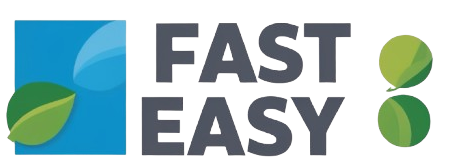Building an emergency fund during times of economic uncertainty is essential to ensure financial security. A well-planned reserve can help cover unexpected expenses, such as car repairs, medical bills, or even job loss. In this article, we will explore practical tips to help you create an emergency fund in just six months.
- Assess Your Monthly Expenses
To start, it’s crucial to understand your monthly expenses. Make a detailed list of all your fixed and variable expenses, such as rent, utilities, food, and entertainment. This will help determine how much you need to save to cover three to six months of expenses. Additionally, having a clear view of your expenses can help you identify areas where you can cut costs.
- Set a Clear Goal
Based on your expense assessment, set a clear goal for your emergency fund. For example, if your monthly expenses are $3,000, your goal might be to save between $9,000 and $18,000. Having a specific goal makes it easier to track your progress and stay motivated. Additionally, a clear goal serves as a constant reminder of why you are saving.
- Create a Realistic Budget
A well-planned budget is essential for saving money effectively. Identify areas where you can cut spending, such as dining out or subscriptions you don’t use. Redirect these funds to your emergency fund. Additionally, consider using personal finance apps to monitor your spending and ensure you stay within budget. This way, you can adjust your expenses as needed.
- Set Up an Automatic Savings Plan
Automating your savings is an effective way to ensure you regularly contribute to your emergency fund. Set up automatic transfers from a portion of your salary to a separate savings account. This not only simplifies the process but also reduces the temptation to spend the money on other things. Additionally, by automating your savings, you create a healthy financial habit.
- Increase Your Income
If possible, consider ways to increase your income to speed up the process of building your reserve. This could include freelance work, selling items you no longer use, or even seeking a raise or promotion at work. Every extra dollar can make a significant difference in your savings goal. Additionally, by diversifying your income sources, you increase your financial security.
- Avoid Unnecessary Debt
During the period of building your reserve, avoid taking on new debt. Credit card debt, in particular, can accumulate quickly due to high interest rates. If you already have debt, prioritize paying it off while still contributing to your emergency fund. Additionally, by avoiding debt, you keep your finances under control and reduce financial stress.
- Review and Adjust Regularly
Throughout the six months, regularly review your progress and adjust your plan as needed. If you encounter difficulties saving the desired amount, reassess your budget and see where you can cut more expenses. Additionally, celebrate small victories along the way to stay motivated. This way, you remain committed to your financial goals.
- Choose the Right Account for Your Reserve
Choosing the right account to store your emergency fund is crucial. Opt for a savings account or a low-risk investment fund that offers liquidity and security. Avoid investing in high-risk assets, as the reserve should be easily accessible in case of emergency. Additionally, by choosing the right account, you ensure your money is safe and available when needed.
- Educate Yourself Financially
In addition to saving, it’s important to educate yourself financially. Read books, attend workshops, and follow financial experts to learn more about financial management. The more you know, the better you can manage your finances and make informed decisions. Additionally, by educating yourself financially, you become more confident in your money management skills. To better understand how cash flow can revolutionize your personal budget, check out our article on how cash flow revolutionizes your personal budget.
- Involve the Family in the Process
If you have a family, involve everyone in the process of creating the emergency fund. Explain the importance of saving and ask for suggestions on how to cut costs. When everyone is committed to the goal, it’s easier to achieve it. Additionally, by involving the family, you create an environment of support and shared responsibility.
Conclusion: Financial Security Within Your Reach
Creating an emergency fund in six months is a challenging but achievable goal with planning and discipline. By following the tips mentioned in this article, you will be on the right path to ensuring your financial security and being prepared to face unforeseen events. Remember that the key to success is consistency and commitment to your financial goals. Additionally, upon reaching your goal, you will experience a sense of relief and security that is worth all the effort. For more information on personal finance and savings tips, visit Exame.


